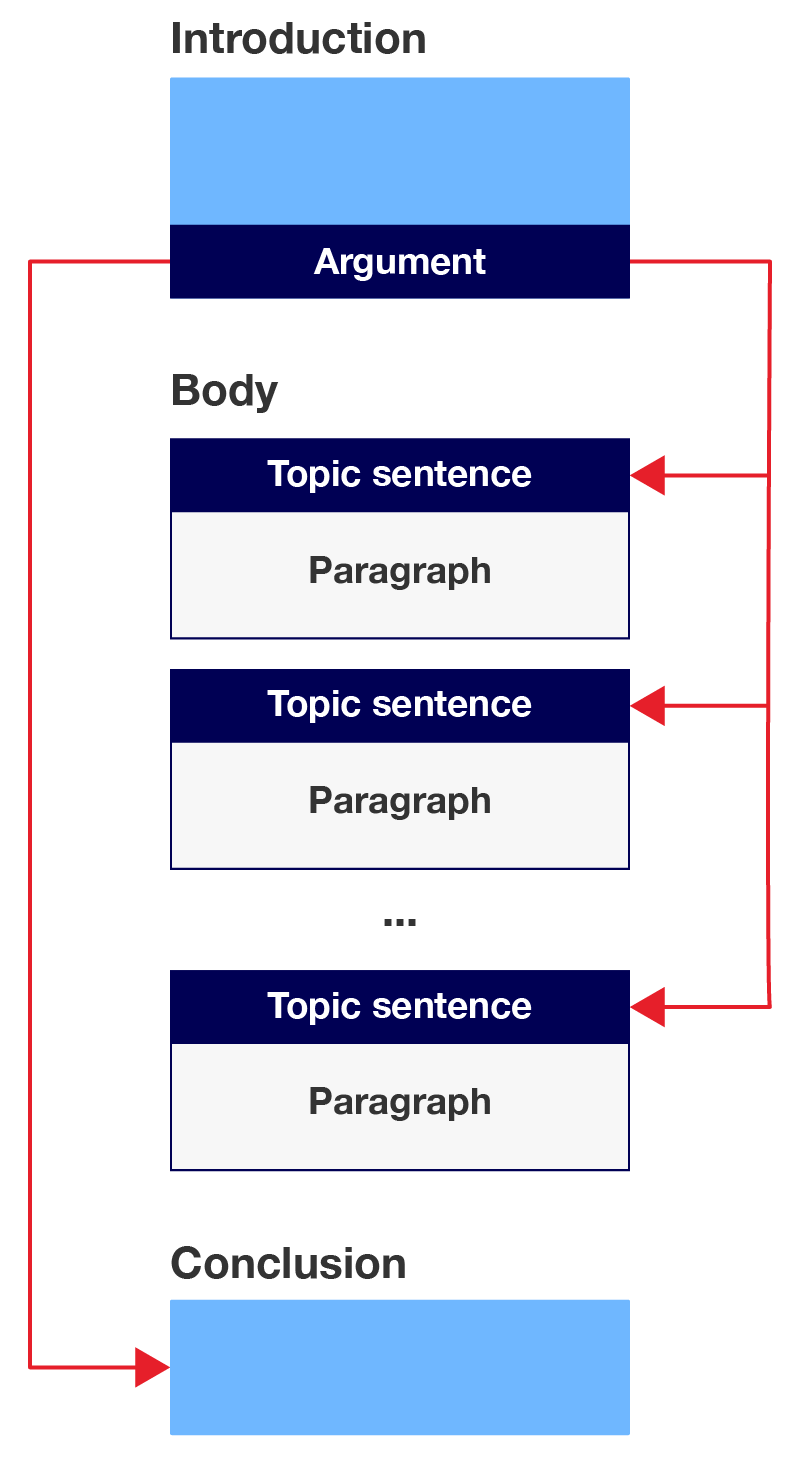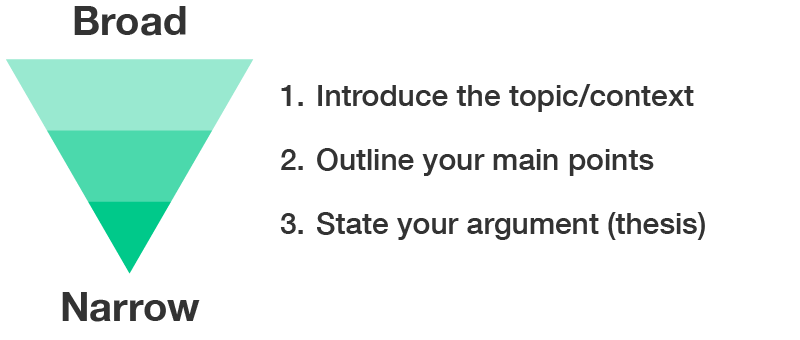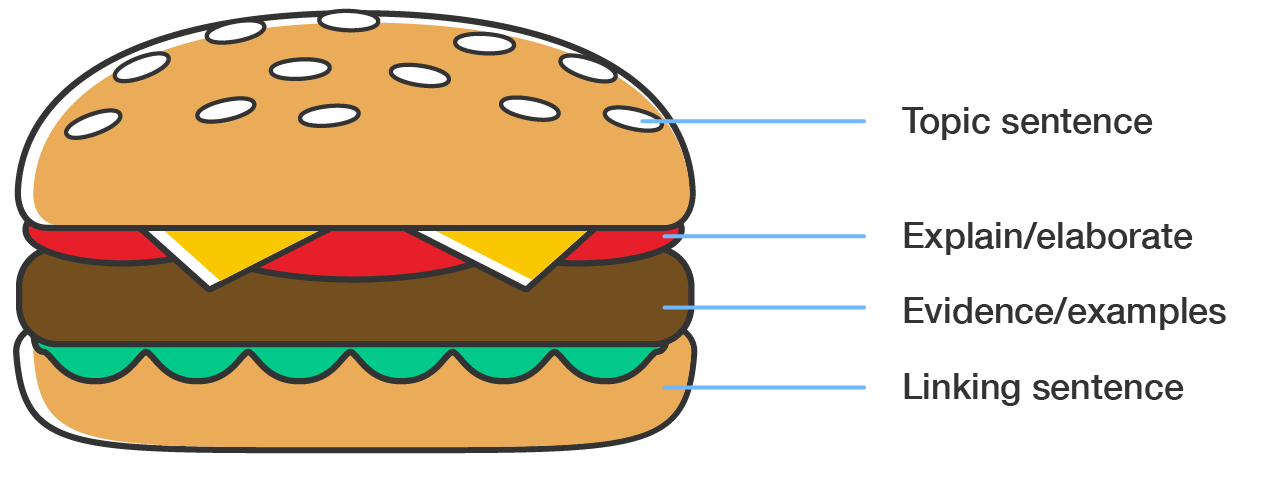Structure of an essay
An essay has three parts: the introduction, a body and a conclusion. Write using your detailed plan. Expect to write several drafts.

- introduces topic/context
- states argument
- outlines main points.
It has a middle (body) that:
- has a series of paragraphs that develop the argument
- each paragraph contains one main idea
- each topic sentence links directly to the argument.
It has an end (conclusion) that:
- restates argument
- sums up
- relates to broader context.
The introduction tells the reader what the essay is about.
Introductions are written from broad topics to narrow ones. They introduce the topic, outline main points and state the argument (thesis).

Notice the clearly defined structure in the sample introduction below.
The body of an essay is made up of connected paragraphs presenting your argument. A well written body section can be one of the keys to assignment success. A commonly-used paragraph structure in academic writing is called the TEEL paragraph, which stands for topic sentence, explain, evidence/example and link.
We recommend that you visit the Writing paragraphs page to learn about this structure.
Here is a brief explanation of TEEL:
- Make sure each paragraph contains one main idea, which you express in a topic sentence. This is usually the first sentence of the paragraph. The topic sentences develop the argument (thesis) of the essay.
Next, expand on the topic sentence in the rest of the paragraph. Add sentences that:
- explain or elaborate on the topic sentence
- provide evidence (with references) or examples to support the topic sentence.
- link back to the main idea in the topic sentence
The hamburger metaphor represents how to write a paragraph using TEEL.

By reading the topic sentences only, you should be able to see the development of the argument.
Explore the TEEL structure within the paragraph. Notice how references have been used throughout the paragraph to support the claims.
The conclusion tells the reader what was covered.
Conclusions are written from narrow topics to broad ones. They restate the argument, sum up, and look at the big picture.

Notice the clearly defined structure in the sample conclusion below.
Images on this page by RMIT, licensed under CC BY-NC 4.0


